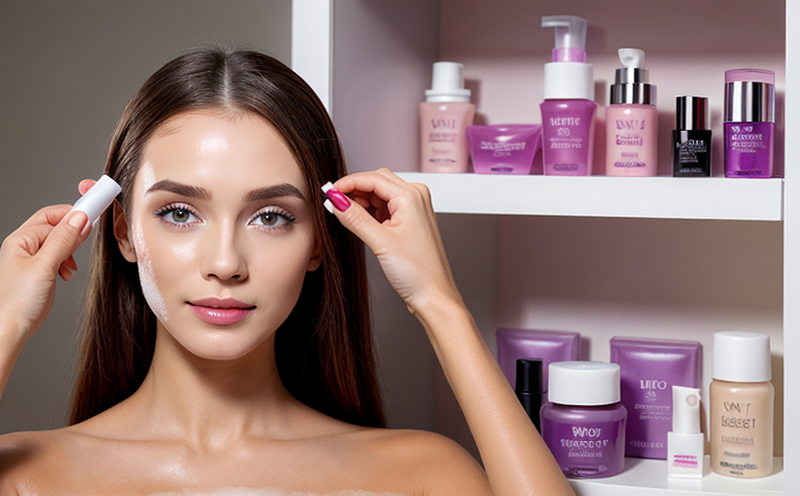Hair Strength and Breakage Testing in Hair Products
Consumer demand for high-quality personal care products has led to a significant increase in product innovation within the cosmetics sector. Ensuring that these products meet strict safety and performance standards is critical, particularly when it comes to hair strength and breakage testing. This service plays a pivotal role in safeguarding consumer health and enhancing customer satisfaction.
Consumer expectations are high, and they demand transparency regarding product quality and safety. Hair strength and breakage tests provide crucial insights into the performance of hair care products under real-world conditions. These tests simulate everyday use scenarios to assess how well a product can withstand stress without causing damage or breakage. The results help manufacturers improve formulas and ingredients, ultimately leading to better products for consumers.
Conducting these tests is essential not only for brand reputation but also for regulatory compliance. Regulatory bodies worldwide have stringent requirements that must be met before any cosmetic product can enter the market. By incorporating hair strength testing into their quality assurance processes, companies ensure they are meeting these standards and protecting consumer interests.
Our laboratory offers a comprehensive range of services to support clients in achieving these goals. Our experts use state-of-the-art equipment and follow internationally recognized methods to perform these tests accurately and consistently. This ensures that the results are reliable and valid, providing actionable insights for product development and improvement.
To begin with, hair samples need to be prepared properly before testing can commence. Samples should represent typical hair types found in your target market, such as Caucasian, African American, or Asian hair. The chosen specimens should reflect the diversity of your customer base accurately. Once prepared, these samples undergo rigorous mechanical tests using specialized equipment like tensile testers.
The testing process typically involves subjecting strands of hair to various levels of stress until breakage occurs. This allows us to determine the breaking point and assess the overall strength of each sample. Additionally, we can measure elasticity, toughness, and other properties that influence how well a product performs during routine use.
Using this data, our team analyzes the results to identify potential areas for improvement in existing products or opportunities for innovation in new formulations. Armed with these insights, manufacturers can make informed decisions about ingredient selection, formulation adjustments, and packaging design changes aimed at enhancing user experience while maintaining safety standards.
Understanding how different components interact within a formula is crucial for developing effective treatments that address specific hair concerns like dryness, frizz, or split ends. By leveraging detailed information from our tests, companies can optimize their products' performance across multiple fronts – from initial application to long-term durability.
Why It Matters
Testing hair strength and breakage is vital for several reasons. Firstly, it helps ensure that the products meet safety regulations set by various countries around the world. Secondly, it provides valuable feedback on how well a product performs in real-world conditions. Lastly, it allows companies to innovate and refine their offerings based on empirical evidence rather than guesswork.
- Regulatory Compliance: Ensures adherence to international standards like ISO, ASTM, or EN that govern cosmetic safety practices.
- User Satisfaction: By providing robust performance data, we help enhance consumer confidence in our clients' brands.
- Innovation Opportunities: Identifies strengths and weaknesses in current formulations so that improvements can be made continuously.
Scope and Methodology
The scope of hair strength testing encompasses several key aspects, including sample preparation, mechanical testing procedures, data analysis techniques, and reporting formats. Below is a detailed breakdown:
| Aspect | Description |
|---|---|
| Sample Preparation | The process involves selecting appropriate hair samples that are representative of the expected end users. Factors such as ethnicity, age group, and typical styling practices must be considered. |
| Mechanical Testing Procedures | Tests include tensile testing where individual strands or groups of strands are subjected to increasing tension until they break. Other methods may also apply shear forces depending on the specific property being evaluated. |
| Data Analysis Techniques | Statistical analyses are conducted on collected data points to quantify performance metrics such as maximum load capacity, elongation at failure, and modulus of elasticity. |
| Reporting Formats | A standardized report format is used to present findings clearly. This includes raw numerical values alongside graphical representations like histograms or scatter plots for easier interpretation by stakeholders involved in decision-making processes related to product development and marketing strategies. |
International Acceptance and Recognition
- The International Organization for Standardization (ISO) has published numerous standards relevant to cosmetic testing, including ISO/IEC 17025 which sets requirements for the competence of testing laboratories.
- American Society for Testing Materials (ASTM) provides guidelines on various types of physical property measurements applicable in the field of materials science and engineering.
- European Norms (EN), particularly EN ISO 1302, cover specific aspects like colorfastness tests which could indirectly relate to hair strength depending upon whether dyeing agents are being evaluated.





